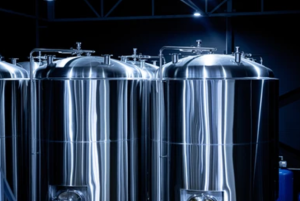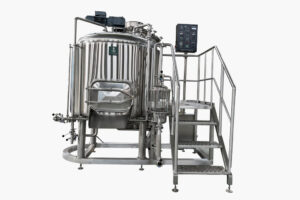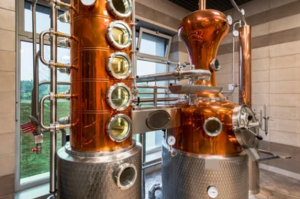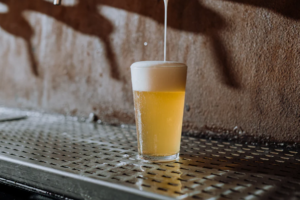COPYRIGHT © 2022 NingBo COFF Machinery Co., ltd. ALL RIGHTS RESERVED
Menu
Categories
Setting up a home distillery requires careful planning and the right equipment. You need essential alcohol distiller machine, including a still, fermentation vessels, and collection containers. Understanding the equipment ensures you operate safely and legally. Safety measures prevent accidents, while knowledge of legalities keeps you compliant with local laws. Crafting your own spirits offers immense satisfaction. You experience the joy of creating unique flavors and sharing them with friends. This journey not only enhances your skills but also deepens your appreciation for the art of distillation.
Essential Alcohol Distiller Equipment
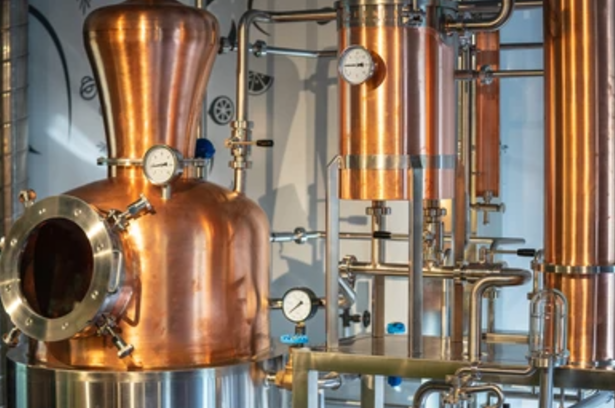
When you embark on the journey of home distillation, selecting the right alcohol distiller equipment becomes crucial. This section will guide you through the essential components needed to set up your home distillery.
Distillation Apparatus
Types of Stills
Stills form the backbone of any distillation setup. They come in various types, each serving a unique purpose. Moonshine stills are popular for their versatility. You can use them to distill spirits, water, and even essential oils. When choosing a still, consider your specific needs and the type of spirits you wish to produce.
Choosing the Right Still for Beginners
As a beginner, selecting the right still can be daunting. Focus on simplicity and efficiency. Look for stills that are easy to assemble and operate. A basic pot still is often recommended for novices due to its straightforward design. It allows you to learn the distillation process without overwhelming complexity.
Fermentation Equipment
Fermentation Vessels
Fermentation vessels are where the magic begins. They hold the liquid mixture, allowing yeast to convert sugar into alcohol. You have options like plastic fermenters, large glass carboys, and stainless steel tanks. Each material has its benefits. For instance, stainless steel offers durability and ease of cleaning, making it a preferred choice for many home distillers.
Airlocks and Bubblers
Airlocks and bubblers play a vital role in fermentation. They allow carbon dioxide to escape while preventing contaminants from entering the vessel. This ensures a clean fermentation process, crucial for producing high-quality spirits. Make sure to choose airlocks that fit securely with your fermentation vessel.
Additional Tools
Thermometers and Hydrometers
Monitoring temperature and alcohol content is essential during distillation. Thermometers help you maintain the right temperature, crucial for efficient alcohol vaporization. Hydrometers, including specific gravity meters and spirit meters, measure the alcohol content and specific gravity of your spirits. These tools ensure you achieve the desired quality and potency.
Cleaning Supplies
Cleanliness is paramount in distillation. Proper cleaning supplies help maintain your equipment, ensuring it functions optimally. Regular cleaning prevents residue buildup, which can affect the taste and quality of your spirits. Invest in brushes, sanitizers, and other cleaning agents to keep your equipment in top condition.
By understanding and acquiring the right alcohol distiller equipment, you set the foundation for a successful home distillation experience. Each component plays a critical role in the process, contributing to the quality and safety of your homemade spirits.
Step-by-Step Setup Process
Embarking on your home distillation journey requires a well-organized setup process. This section will guide you through preparing your space, assembling the equipment, and starting the fermentation process.
Preparing Your Space
Creating an ideal environment for your distillation activities is crucial. You need to ensure that your space is both safe and efficient.
Selecting a Suitable Location
Choose a location that is spacious and away from flammable materials. A garage or a well-ventilated basement often works well. Ensure that the area is free from clutter to prevent accidents. An experienced distiller once shared, “The right location can make or break your distillation experience.”
Ensuring Proper Ventilation
Proper ventilation is essential to prevent the buildup of fumes. Open windows or use fans to circulate air. This step minimizes the risk of fire and ensures a safe working environment. Remember, safety should always be your top priority when setting up your alcohol distiller equipment.
Assembling the Equipment
Once your space is ready, it’s time to assemble your distillation apparatus. This involves setting up the still and connecting all necessary components.
Setting Up the Still
Begin by placing your still on a stable surface. Ensure that it is level to avoid spills. Follow the manufacturer’s instructions carefully. This step is crucial for the efficient operation of your equipment. A seasoned distiller emphasized, “A well-set still is the heart of successful distillation.”
Connecting Components
Connect the various components of your distillation setup. This includes attaching the condenser and collection containers. Ensure all connections are tight to prevent leaks. Double-check each connection to maintain the integrity of your setup.
Starting the Fermentation
With your equipment in place, you can now start the fermentation process. This involves mixing ingredients and monitoring the fermentation progress.
Mixing Ingredients
Combine water, sugar, and yeast in your fermentation vessel. Stir the mixture thoroughly to ensure even distribution. This mixture, known as the wash, is the foundation of your spirits. The quality of your wash directly impacts the final product.
Monitoring the Process
Keep a close eye on the fermentation process. Use a thermometer to maintain the right temperature. Check the airlock regularly to ensure it’s functioning correctly. Monitoring helps you catch any issues early, ensuring a smooth fermentation.
By following these steps, you lay a solid foundation for your home distillation endeavors. Each phase of the setup process plays a vital role in producing high-quality spirits. With the right preparation and attention to detail, you can enjoy the art of distillation safely and effectively.
Safety Tips for Home Distillation
Ensuring safety during home distillation is crucial. You must handle equipment carefully, prevent fire hazards, and protect yourself. This section provides essential safety tips to guide you through the process.
Handling Equipment Safely
Operating distillation equipment requires attention to detail. You need to focus on two main aspects: avoiding overheating and properly sealing connections.
Avoiding Overheating
Overheating can lead to dangerous situations. Always monitor the temperature closely. Use a reliable thermometer to keep track of the heat levels. Maintain the recommended temperature range for your specific distillation process. This practice not only ensures safety but also enhances the quality of your spirits.
Properly Sealing Connections
Leaks can cause accidents and spoil your product. Ensure all connections are tight and secure. Double-check seals before starting the distillation process. A well-sealed setup prevents vapor escape and maintains the integrity of your operation.
Fire and Explosion Prevention
Distillation involves flammable materials. You must take steps to prevent fires and explosions.
Keeping Flammable Materials Away
Keep your distillation area free from flammable substances. Store them in a separate location. Ensure that your workspace is clean and organized. This reduces the risk of accidental ignition.
Using Fire Extinguishers
Always have a fire extinguisher within reach. Familiarize yourself with its operation. In case of an emergency, quick access to a fire extinguisher can prevent a small incident from becoming a disaster.
Personal Safety Measures
Your safety is paramount. Protect yourself by wearing appropriate gear and ensuring first aid availability.
Wearing Protective Gear
Wear protective clothing, such as gloves and goggles. These items shield you from potential spills and splashes. They also provide a barrier against heat and fumes.
Ensuring First Aid Availability
Keep a first aid kit nearby. Accidents can happen, and being prepared is essential. Ensure that you know how to use the kit effectively. Quick response to minor injuries can prevent more serious complications.
By following these safety tips, you create a secure environment for your home distillation activities. Each measure contributes to a safer and more enjoyable distillation experience. Prioritize safety to fully enjoy the art of crafting your own spirits.
Legal Considerations for Home Distillation
Understanding the legal landscape of home distillation is crucial. You must navigate local laws to ensure compliance and avoid potential legal issues.
Understanding Local Laws
Before you start distilling at home, familiarize yourself with the local laws. These regulations vary significantly by region, and understanding them is essential.
Licensing Requirements
To legally distill alcohol at home, you often need a proper license. Federal law permits owning a still for purposes like distilling water or essential oils. However, distilling alcohol requires specific licensing. Check with local authorities to understand the necessary permits and ensure you comply with all legal requirements.
Quantity Restrictions
Many regions impose restrictions on the quantity of alcohol you can produce at home. These limits aim to prevent illegal distribution and ensure personal use only. Verify the specific quantity restrictions in your area to avoid exceeding legal limits.
Consequences of Non-Compliance
Failing to adhere to legal requirements can lead to serious consequences. Understanding these potential repercussions helps you make informed decisions.
Fines and Penalties
Non-compliance with distillation laws can result in hefty fines and penalties. Authorities may impose financial penalties for illegal distillation activities. These fines serve as a deterrent and emphasize the importance of following legal guidelines.
Legal Advice and Resources
If you’re unsure about the legalities of home distillation, seek legal advice. Consulting with a legal expert can provide clarity and ensure you operate within the law. Additionally, explore resources like government websites and local distillation communities for guidance and support.
By understanding and adhering to local laws, you can enjoy home distillation responsibly and legally. This knowledge not only protects you from legal issues but also enhances your appreciation for the craft.
Troubleshooting Common Issues
Even with careful preparation, you may encounter challenges during the distillation process. Understanding how to troubleshoot common issues ensures a smoother experience and better-quality spirits.
Equipment Malfunctions
Your distillation equipment might face occasional hiccups. Knowing how to address these problems keeps your operation running smoothly.
Identifying Leaks
Leaks can compromise the quality of your spirits and pose safety risks. Regularly inspect your equipment for any signs of leakage. Look for moisture or drips around connections and seals. Tighten any loose fittings and replace worn-out gaskets. A well-maintained setup prevents vapor loss and ensures efficient distillation.
Fixing Temperature Fluctuations
Temperature control is crucial for successful distillation. If you notice fluctuations, check your heat source and thermometer. Ensure that your heat source provides consistent energy. Calibrate your thermometer to guarantee accurate readings. Consistent temperature helps maintain the desired alcohol concentration and flavor profile.
Fermentation Problems
Fermentation is a critical stage in spirit production. Addressing issues promptly ensures a high-quality final product.
Stalled Fermentation
Fermentation may stall due to various factors. Check the temperature of your fermentation vessel. Yeast activity slows down in cold conditions. Adjust the temperature to the optimal range for your yeast strain. Also, ensure that your yeast is fresh and active. Adding yeast nutrients can revive stalled fermentation and promote healthy yeast growth.
Off-Flavors in the Product
Off-flavors can result from contamination or improper fermentation. Clean your equipment thoroughly to prevent bacterial growth. Use sanitized tools and containers throughout the process. Monitor the fermentation temperature closely. High temperatures can produce unwanted flavors. By maintaining cleanliness and optimal conditions, you enhance the taste and quality of your spirits.
“The flavoring and character of distilled spirits are developed through additional processes like aging in wooden barrels.” – Unknown
Understanding these troubleshooting techniques empowers you to tackle common distillation challenges. By addressing equipment malfunctions and fermentation problems, you ensure a successful and rewarding home distillation experience.
Enhancing Your Distillation Skills
Improving your distillation skills involves both creativity and community engagement. By experimenting with recipes and connecting with fellow enthusiasts, you can elevate your home distillation experience.
Experimenting with Recipes
Experimentation is key to crafting unique spirits. You can explore various ingredients and techniques to create distinct flavors.
Crafting Unique Flavors
Creating unique flavors requires a willingness to try new things. Start by altering the types of grains, fruits, or botanicals in your mash. Each ingredient contributes different notes to your spirit. For instance, adding juniper berries can give your gin a classic taste, while citrus peels might add a refreshing twist. Keep a journal of your experiments to track what works best.
Adjusting Ingredients
Adjusting ingredients allows you to refine your recipes. You can modify the sugar content to influence the alcohol level or tweak the yeast strain for different fermentation profiles. Small changes can significantly impact the final product. Remember, patience and precision are crucial. As you gain experience, you’ll develop a deeper understanding of how each component affects the overall flavor.
Joining Distillation Communities
Connecting with others who share your passion can provide valuable insights and support. Engaging with distillation communities offers opportunities to learn and grow.
Online Forums and Groups
Online forums and groups are excellent resources for distillers. Platforms like Reddit and Facebook host communities where you can ask questions, share experiences, and learn from seasoned distillers. These groups often discuss troubleshooting tips, equipment recommendations, and recipe ideas. Participating in these discussions can enhance your knowledge and confidence.
Local Workshops and Events
Attending local workshops and events provides hands-on learning experiences. Many regions host distillation classes where experts teach techniques and safety practices. These events offer a chance to network with other enthusiasts and professionals. You might even find opportunities to tour distilleries and see commercial operations in action. Such experiences can inspire new ideas and improve your distillation skills.
By experimenting with recipes and engaging with distillation communities, you can enhance your skills and enjoy the art of home distillation more fully. Each step you take in this journey contributes to your growth as a distiller, allowing you to produce spirits that reflect your creativity and dedication.
Storing and Aging Your Spirits
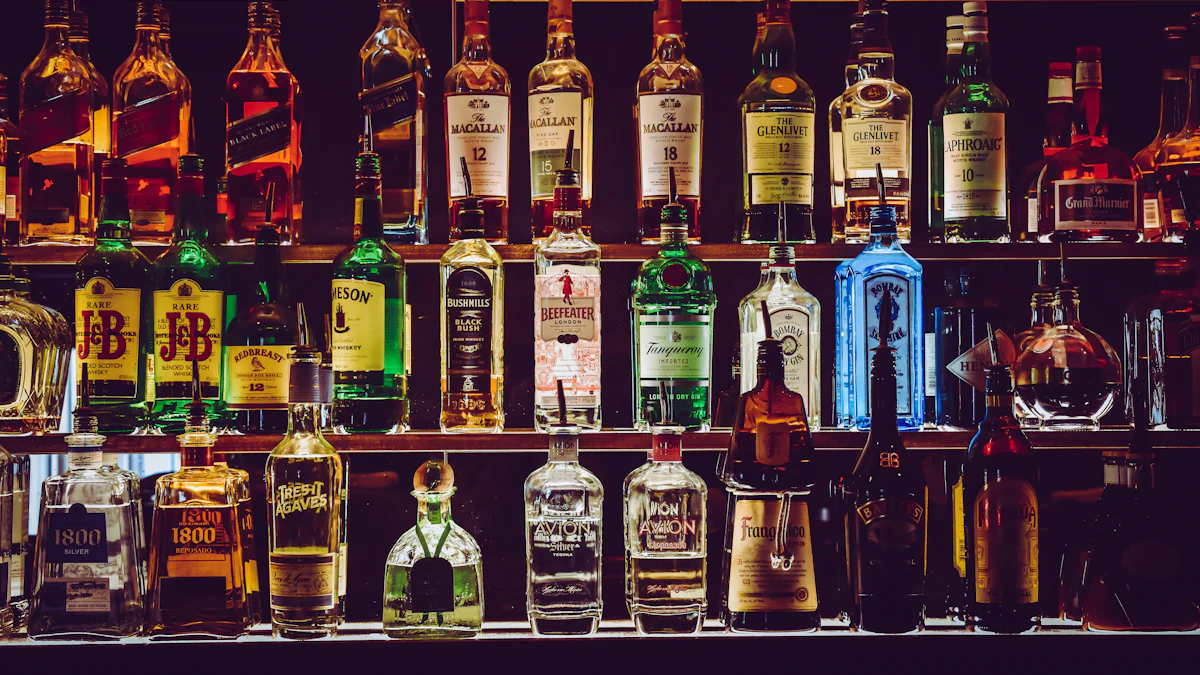
Proper storage and aging of your spirits significantly enhance their flavor and quality. This section will guide you through the best practices for storing and aging your homemade spirits.
Proper Storage Techniques
Storing your spirits correctly ensures they maintain their quality over time. Here are some key techniques to consider:
Choosing the Right Containers
Selecting the right containers is crucial for preserving the flavor and aroma of your spirits. Glass bottles are a popular choice due to their non-reactive nature. They prevent any unwanted chemical reactions that could alter the taste of your spirits. Stainless steel containers also work well, offering durability and protection from light. Avoid using plastic containers, as they can leach chemicals into your spirits, affecting their quality.
Controlling Temperature and Light
Temperature and light play a significant role in the storage of spirits. Store your spirits in a cool, dark place to prevent degradation. Excessive heat can cause the alcohol to expand and evaporate, while light exposure can lead to chemical reactions that alter the flavor. Aim to keep your storage area at a consistent temperature, ideally between 60-70°F (15-21°C). This helps maintain the integrity of your spirits over time.
Aging for Improved Flavor
Aging your spirits can transform their flavor profile, adding depth and complexity. Here’s how you can achieve this:
Using Oak Barrels
Oak barrels have been used for centuries to age spirits, enhancing their flavor and aroma. The wood interacts with the alcohol, imparting unique characteristics such as vanilla, caramel, and spice notes. The aging process also helps to mellow harsh flavors, resulting in a smoother taste. If you choose to use oak barrels, ensure they are properly charred to maximize the flavor infusion.
“The maturation of wine, spirits, and even Tabasco sauce in wooden casks greatly improves their flavor.”
This traditional method remains a favorite among distillers for its ability to create rich, complex spirits.
Monitoring Aging Progress
Regularly monitoring the aging progress of your spirits is essential. Taste your spirits periodically to assess their development. This allows you to determine the optimal aging period for your desired flavor profile. Keep detailed notes on each tasting session, recording any changes in flavor, aroma, and color. This practice helps you refine your aging process and achieve consistent results.
By following these storage and aging techniques, you can enhance the quality and flavor of your homemade spirits. Proper storage protects your spirits from degradation, while aging adds complexity and depth. Embrace these practices to fully enjoy the fruits of your distillation efforts.
FAQ
In this section, you’ll find answers to some common questions about home distillation. These FAQs aim to clarify doubts and provide you with valuable insights.
1. Is it legal to distill alcohol at home?
The legality of home distillation varies by location. In the United States, federal law allows you to own a still for non-alcoholic purposes, like distilling water or essential oils. However, distilling alcohol without a permit is illegal. Always check your local laws and regulations before starting your distillation journey.
2. What type of still should I use as a beginner?
As a beginner, you should consider using a pot still. Pot stills are simple to operate and understand. They allow you to learn the basics of distillation without overwhelming complexity. Once you gain experience, you can explore more advanced stills like reflux stills for higher purity spirits.
3. How do I ensure the safety of my distillation process?
Safety is crucial in home distillation. Always monitor the temperature closely to avoid overheating. Ensure all connections are tight to prevent leaks. Keep your workspace free from flammable materials and have a fire extinguisher nearby. Wearing protective gear, like gloves and goggles, adds an extra layer of safety.
4. What ingredients do I need for fermentation?
For fermentation, you’ll need water, sugar, and yeast. These ingredients form the wash, which ferments to produce alcohol. You can experiment with different sugars, like corn or fruit, to create unique flavors. Ensure your ingredients are fresh and clean to achieve the best results.
5. How can I improve the flavor of my spirits?
Improving flavor involves experimenting with recipes and aging techniques. You can adjust ingredients, like grains or botanicals, to craft unique flavors. Aging your spirits in oak barrels adds depth and complexity. Regularly taste your spirits during aging to monitor their development and refine your process.
6. What should I do if my fermentation stalls?
If fermentation stalls, check the temperature of your fermentation vessel. Yeast activity slows in cold conditions. Adjust the temperature to the optimal range for your yeast strain. Ensure your yeast is fresh and active. Adding yeast nutrients can also help revive stalled fermentation.
7. How do I store my spirits properly?
Store your spirits in glass or stainless steel containers to preserve their quality. Keep them in a cool, dark place to prevent degradation. Avoid plastic containers, as they can leach chemicals into your spirits. Consistent temperature and minimal light exposure help maintain the integrity of your spirits over time.
8. Can I sell the spirits I distill at home?
Selling home-distilled spirits is generally illegal without proper licensing. Most regions have strict regulations regarding the sale of alcohol. If you’re interested in selling your spirits, research the necessary permits and licenses required in your area. Always comply with local laws to avoid legal issues.
These FAQs provide a foundation for understanding home distillation. By addressing these common questions, you can embark on your distillation journey with confidence and clarity.
Setting up a home distillery involves several key steps and considerations. You need to choose the right equipment, ensure safety, and understand legal requirements. This journey offers not only the satisfaction of crafting your own spirits but also the joy of creativity. As you embark on this adventure, remember that distillation weaves tradition and innovation into a flavorful experience. With confidence and curiosity, you can transform raw ingredients into liquid gold. Embrace the process, and let your passion for distillation guide you in creating unique and delightful spirits.

